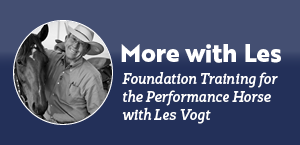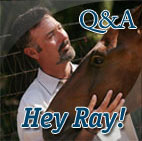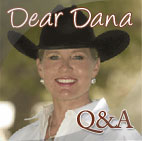WINTER
 THE TRAUMA OF DECEMBER’S WILDFIRES—and subsequent mudslides a month later in some areas—was far from forgotten in communities from San Diego County to Central California. In many places, victim needs still outstripped supplies. But signs of recovery were appearing, slowly.
THE TRAUMA OF DECEMBER’S WILDFIRES—and subsequent mudslides a month later in some areas—was far from forgotten in communities from San Diego County to Central California. In many places, victim needs still outstripped supplies. But signs of recovery were appearing, slowly.
While the toll of the terrible trio—the Lilac Fire in Bonsall, Creek Fire in Los Angeles and Thomas Fire in Ventura County—was still being calculated, groups formed both formally and informally to mutually support and educate neighbors in respective communities.
Deer Springs Equestrian in San Marcos, a few miles due south of the Lilac Fire, conducted a two-hour equine microchip clinic on Jan. 13, where Dr. Emily Sandler of Pacific Coast Equine Veterinary Services microchipped and registered horses.
The local advocacy group, the Twin Oaks Valley Equestrian Association, sent out a comprehensive self-evacuation guide that could be a difference-maker in preparation for a future event. The guide is rooted in the Cal Fire Volunteers in Prevention campaign after the June 2008 Lightning Strike Fires in Tehama County.
In the area struck by the Creek Fire in Los Angeles, equestrians banded together to educate, plan and communicate using lessons learned from the Dec. 6 firestorm that devastated longtime equestrian centerpieces in their community like Middle Ranch and Gibson Ranch.
At Gibson Ranch, volunteers worked several months, lending skills and effort toward a common vision: the return of the horse ranch to normal.
EquestFest returns this month better than ever!
 The Tournament of Roses EquestFest presented by Wells Fargo, is coming soon to the Los Angeles Equestrian Center in Burbank on Saturday, Dec. 29. Don’t miss the opportunity to be “up close and personal” with your favorite equestrian units from this year’s fabulous parade.
The Tournament of Roses EquestFest presented by Wells Fargo, is coming soon to the Los Angeles Equestrian Center in Burbank on Saturday, Dec. 29. Don’t miss the opportunity to be “up close and personal” with your favorite equestrian units from this year’s fabulous parade.
The very first Tournament of Roses parade took place on January 1, 1890, when Grand Marshal Francis Rowland and President Charles Holder mounted their favorite horses and led the Rose Parade through Pasadena. In 1920, the 31st Annual Rose Parade marked the end of the horse-drawn era and ushered in the innovation of motor-driven floats, powered by electric and gasoline engines. Over the years, the organizing committees have recognized and honored the horse-heritage of this great event. This year, 18 of the nearly 90 participants in the Tournament of Roses parade are equestrian.
Talented equestrians have performed many favorite and iconic roles, from pony races and chariot races, to beautiful horse-drawn carriages and horse-drawn floats. A tradition as old as the Tournament of Roses® itself, equestrian units remain an irreplaceable part of America’s New Year Celebration®. A wide variety of horse breeds entertain spectators, each with their own style and grace. Previous breeds have included Curly Horses, American Saddlebreds, Gypsy Cobs, Andalusians, Miniature Horses, Draft Horses, Quarter Horses and more.
Strangles and Biosecurity
 We had a question come in regarding strangles. This year, the American College of Veterinary Internal Medicine (ACVIM) came out with a consensus statement on this disease. I will go over the key items discussed and the bio-security measures they recommend. These recommendations apply to any outbreak of contagious disease, although each disease may have some minor changes.
We had a question come in regarding strangles. This year, the American College of Veterinary Internal Medicine (ACVIM) came out with a consensus statement on this disease. I will go over the key items discussed and the bio-security measures they recommend. These recommendations apply to any outbreak of contagious disease, although each disease may have some minor changes.
Strangles is a term used to describe a bacterial infection caused by the organism Streptococcus equi ssp equi. The common presentation is a respiratory disease with lymph node enlargement. Horses typically have a fever and severe nasal discharge. The bacteria starts to be shed in nasal secretions 2-3 days after the onset of fever and typically persists for 2-3 weeks. It is recommended that all recovered horses be treated as potentially infectious for six weeks after the resolution of purulent (pus) discharge. From 20-25 percent of horses recovering from the disease can become susceptible to a second attack of the disease. An average of 10 percent of horses will have a persistent infection in their guttural pouches, which are located in the throat area and can test positive from that area for months to years without showing outward clinical signs. These types of animals, healthy without showing signs, are thought to be more important in the spread of the disease as they are not recognized as sick.
Review and resume
 As 2018 comes to a close, I find myself reflecting on the lessons that have stood out above the others.
As 2018 comes to a close, I find myself reflecting on the lessons that have stood out above the others.
They are…
Have a goal in mind and take the steps necessary to obtain that goal. “No one who achieves any level of success does so without the help of others. The wise and confident acknowledge this help with gratitude.” Alfred North Whitehead.
Without action taken to move forward, your desire to improve will remain a day dream. I have a passion for what I do, which is starting colts and working with problem horses. Because of my passion, I continue to strive for improvement to better serve the clients and horses that come to me for help and to be a better horsewoman. I look to mentors that I respect and that have proven success in the discipline I am seeking help in.
Smaller circles
 By now your horse should be moving along smoothly at all three gaits in your training arena. So the next thing we’re going to start doing is to ask him to become more responsive and balanced as you guide him around, and to try a few different maneuvers. We’re not really concerned with speed right now, but we do want gaits to be smooth and steady. If your horse is a little “chargey” elsewhere in this manual you’ll find ways to solve that problem.
By now your horse should be moving along smoothly at all three gaits in your training arena. So the next thing we’re going to start doing is to ask him to become more responsive and balanced as you guide him around, and to try a few different maneuvers. We’re not really concerned with speed right now, but we do want gaits to be smooth and steady. If your horse is a little “chargey” elsewhere in this manual you’ll find ways to solve that problem.
Also, while we talk about lots of variations of the circle, you’ll want to spend a lot of time working in big circles—the size you would do in a reining pattern. In a reining class you’ll spend more time on your circles than anything else. You want your horse to guide so easily that once you put him on a circle he almost stays there on his own. We’re going to be adding speed to that circle in the future, so you want to spend time now making sure he is really comfortable in them.



 Read Columns
Read Columns

